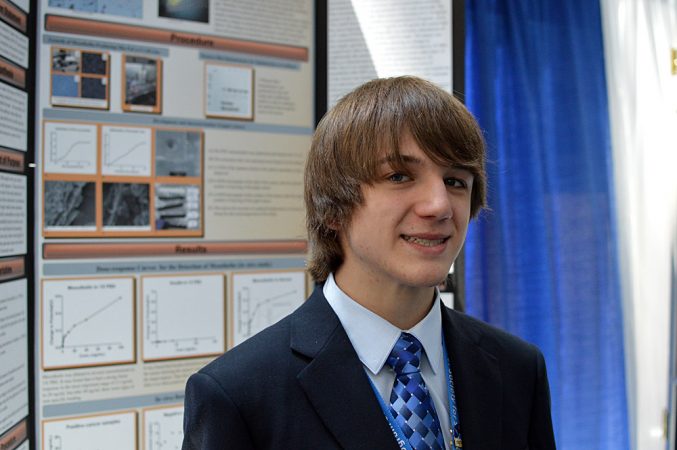Speedy cancer detector
New technique quickly, cheaply identifies a particularly dangerous form of cancer
By Sid Perkins

A new type of sensor that looks for a certain chemical in blood could help doctors quickly and easily detect one of the deadliest forms of cancer. The sensor so impressed the judges at this year’s Intel International Science and Engineering Fair that it won the $75,000 top prize, awarded on May 18.
The pancreas is a large organ that sits just below your stomach. It secretes a number of chemicals called hormones, including insulin, which helps regulate how the cells in your body process carbohydrates, or sugars, and fats. The organ also releases enzymes, which help digest food. Pancreatic cancer is particularly deadly. Only about 1 in every 20 people who develop this type of cancer lives more than 5 years after being diagnosed, notes Jack Andraka.
This 15-year-old freshman at North County High School in Glen Burnie, Md., became interested in developing a way to detect pancreatic cancer for a couple of reasons. Early diagnosis of the disease helps boost survival rates, he observes. But perhaps more importantly, his uncle died of pancreatic cancer that wasn’t detected until after it had spread to other parts of his body.

Blood tests are perhaps the best way to find the disease early. One particular substance — a protein called mesothelin — shows up in large amounts in the blood of people who have pancreatic cancer. So Andraka sought to develop a sensor that would detect this protein.
To make his sensor, he soaked small strips of paper with a solution of tiny tubes of carbon (called nanotubes). He also added antibodies (part of the human immune system that helps fight disease). These antibodies react with mesothelin, and as that reaction occurs, it changes the amount of electricity that can be conducted along the sensor. With the right electronics, that electrical change can easily be detected.
The new sensor can provide results in 5 minutes, much more quickly than the current type of blood test for the cancer, which takes 14 hours. The device is also much cheaper, costing only 3 cents; the current test costs about $800. Finally, Andraka’s sensor is much more sensitive than the current test — a fact that should allow doctors to detect the disease earlier than is now possible.
Andraka has applied for a patent on his sensor. He described the new system on May 17 at the Intel International Science and Engineering Fair in Pittsburgh, Pa. This event is sponsored by Intel Foundation and run by the Society for Science & the Public (which publishes Science News for Kids).
Andraka describes his work in this video.
This is one in a series of articles covering the Intel ISEF 2012 competition. Check the link for other stories on the cool research presented.